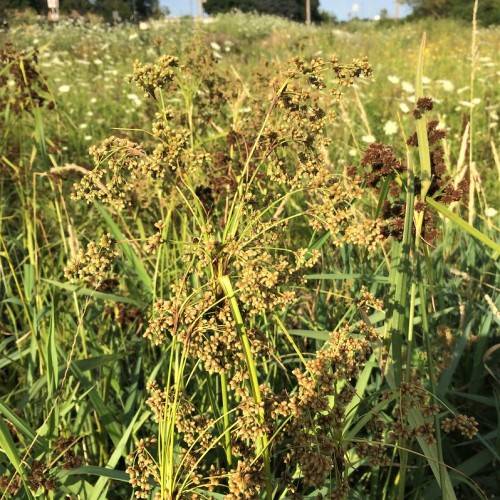
wool grass
Scirpus cyperinus
Cycle:
Perennial
Watering:
Frequent
Hardiness Zone:
4 - 8
Flowers:
Flowers
Sun:
Full sun,part shade
Soil:
Bog
Fruits:
Fruits In Summer Ready In Fall
Growth Rate:
High
Maintenance:
Low
Drought Tolerant:
Yes
Salt Tolerant:
Yes
Invasive:
Yes
Care Level:
Medium
watering
Wool grass should be watered regularly, approximately 1-2 times per week. Make sure the soil is evenly moist, but not overly saturated with water. If the soil begins to look dry, water the plant until water runs from the bottom of the pot. As the temperatures cool in autumn, reduce the frequency of watering slightly. During the hottest summer months, increase watering slightly to keep the soil moist. Wool grass will benefit from occasional misting or fogging on hot summer days.
sunlight
Wool grass (Scirpus cyperinus) is a marsh grass and typically grows in semi-shade and wet soil. It prefers 6-8 hours of direct sunlight per day. It is best to give it full sun in the morning hours and partial shade in the afternoon. To ensure healthy growth, the plant should be kept in an area that receives at least 3 or 4 hours of direct sunlight during the day.
pruning
Wool grass (Scirpus cyperinus) should be pruned in early spring, before new growth starts. Pruning should be done to remove any dead or dying stems, as keeping dead foliage on the plant can encourage pests. Cut all the stems back to the ground where they grew from and remove any unhealthy foliage. If the plant has spread quite wide, it may need to be lightly cut back to retain the desired shape. As this plant only grows to a maximum height of 1-2 ft, it is unlikely that any severe pruning is required.
